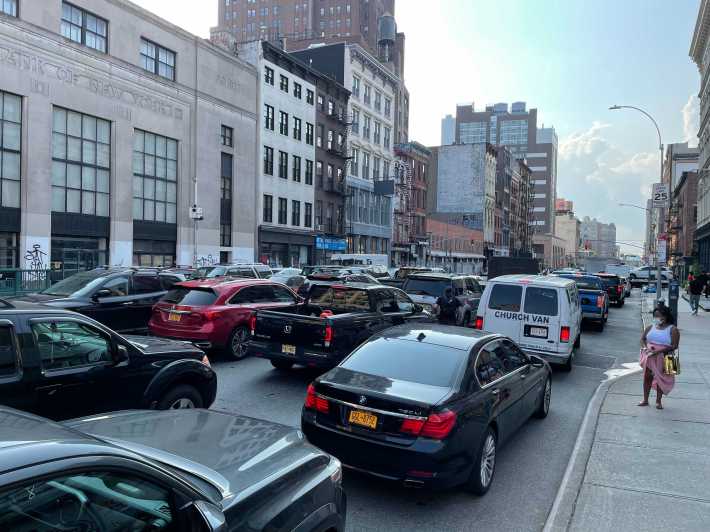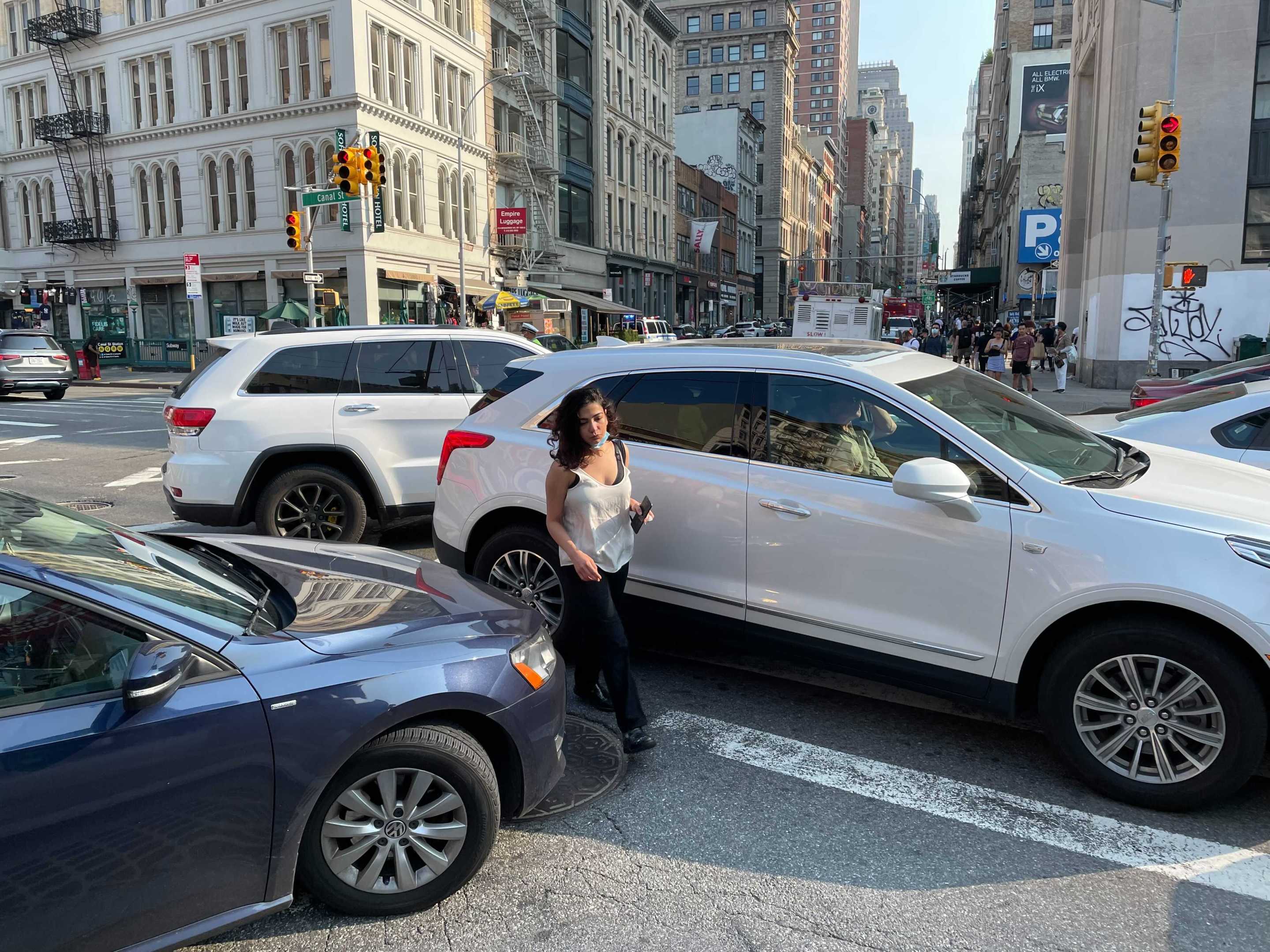If congestion pricing is delayed until July 2022, New Yorkers will be paying for it with billions of dollars and millennia of precious human life.
Over that 18-month setback, which was forecasted by Mayor de Blasio on Thursday, drivers and transit riders will lose 242,250,000 hours in time they could have saved with congestion pricing; that works out to 27,654 years. (All this wasted time alone is worth more than $5 billion.)
There’s also the $130.5 million reduction in CO2 emission damages, the $255 million savings in health costs associated from air pollution, $150 million in noise costs reductions, and the roughly $900 million in longevity benefits from the increase in walking and biking that New York will not realize. Congestion pricing would have prevented 2,158 traffic crash injuries and 11 deaths citywide from January 2021 through July 2022.
These figures come from the Balanced Transportation Analyzer spreadsheet of planner and congestion-pricing advocate Charles Komanoff, and are based on his meticulous projections using the Fix NYC plan pricing scheme. Streetsblog also pulled Crashmapper data from the last 18 months.
On Thursday, de Blasio told New Yorkers that congestion pricing is “urgent” and necessary to fix the transit system and address what has become the worst traffic in America.
The date the mayor set for tolling vehicles below Manhattan’s 60th Street: June 2022, one-and-a-half years after congestion pricing was supposed to begin before the Trump administration inexplicably delayed the process. The state law that created congestion pricing in 2019 requires that any plan raise $1 billion in annual toll revenue, which then will generate $15 billion in bonds to fund the MTA’s desperately needed capital program.
Komanoff, whose data has been used by the state in its own congestion-pricing analysis, cautions that his projections assume an immediate benefit of a better, faster MTA from the toll revenue — which in reality would take a few years to realize (although it didn’t stop the mayor from making better transit the centerpiece of his Thursday press conference).
Still, the more conservative projections that don’t bake in the immediate benefit are eye-popping.
For instance, from its start, congestion pricing would immediately save travelers 266,000 hours every day — which includes time saved by drivers and passengers traveling to and throughout Manhattan's central business district, time saved on other vehicular trips throughout the city, and fewer people sitting stranded on a bus or train.
That’s 97,090,000 hours saved in a year, or 145,635,000 hours every 18 months. Covert those hours into days (6,068,125) and then years (16,625) and one starts to understand the sheer magnitude of traffic's costs.
“The public really needs to be rising up and demanding congestion pricing now,” said Komanoff, who pointed out that the governor’s Fix NYC plan would really only eliminate a little more than 3 percent of the city’s vehicular trips. “This should be easy.”

According to the MTA and Gov. Cuomo’s Office, the difficulty now stems from what the Federal Highway Administration wants to see in the environmental assessment, which it ordered in late March. The mayor this week appointed a member of the Traffic Mobility Review Board — the entity that is charged with creating the tolling scheme and setting exemptions — but the state must drive the process.
“Since then, we have been in deep, detailed and productive discussions with FHA over exactly what that entails,” MTA spokesperson Ken Lovett wrote in a statement on Thursday, after the mayor made his announcement. “We will move forward on a timeline that meets all requirements set out for us.”
On Friday, Lovett declined to comment further. A spokesperson for Cuomo referred us to that same statement, and declined to answer questions about whether the governor would seek to expedite the process. A spokesperson for the Federal Highway Administration said that it is "in touch" with the state and local authorities but did not elaborate.
Komanoff described Lovett’s statement as “neck and neck with, ‘The dog ate my homework.’” In a recent Streetsblog op-ed, he also suggested that de Blasio could use home rule to institute the tolls himself.
Danny Pearlstein, the policy and communications director at Riders Alliance, said the mayor was right to appoint his member of the TMRB, but “the focus needs to be on the governor, as well as the U.S. Department of Transportation in Washington, to both view this as a top priority. It cannot be business as usual.”
“The MTA works for the governor so this is on the governor to make it a priority and get it done,” Pearlstein said. “At the same time, federal officials need to realize that the future of New York hinges on this project, and treating it like just another environmental assessment is a mistake."






